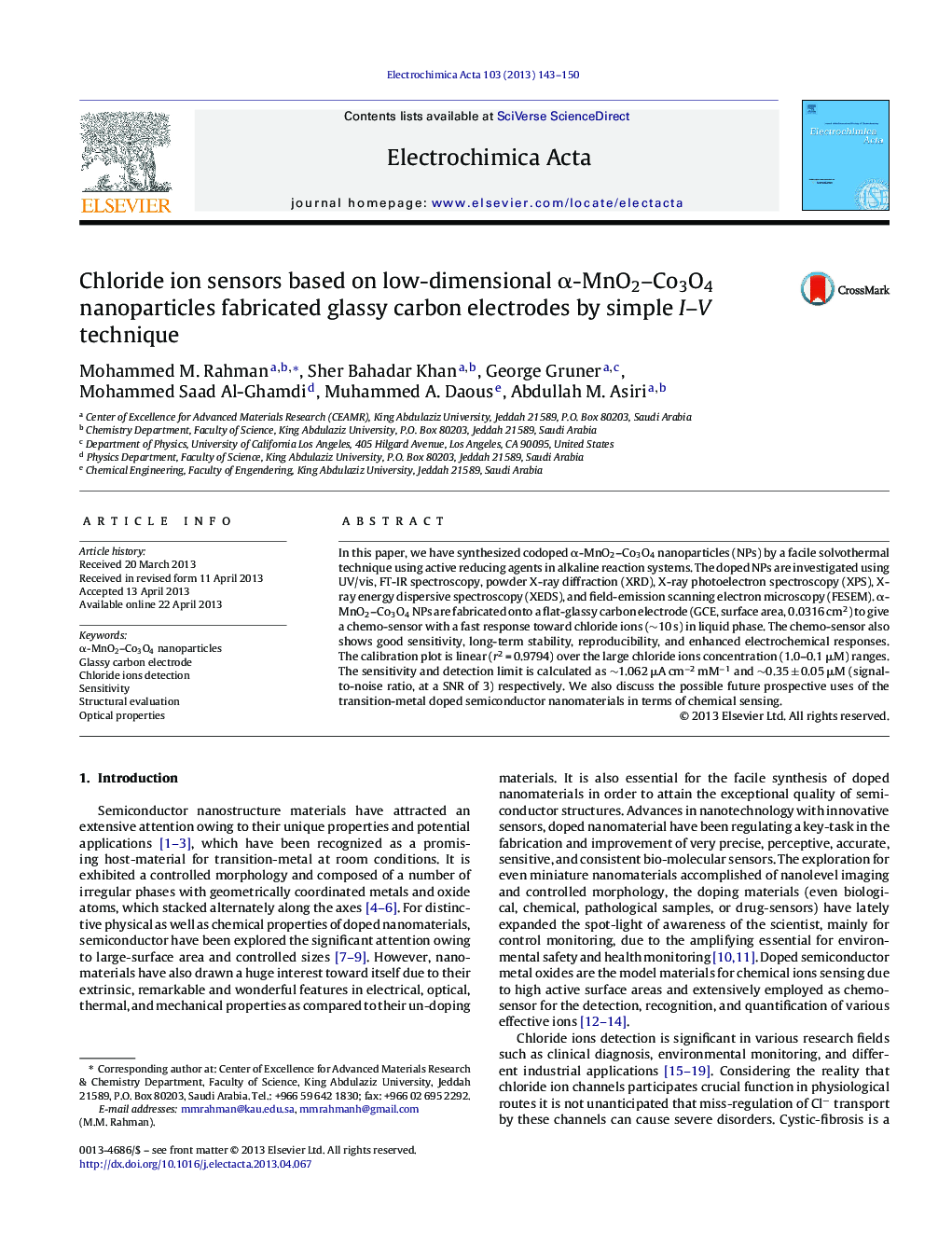| Article ID | Journal | Published Year | Pages | File Type |
|---|---|---|---|---|
| 187093 | Electrochimica Acta | 2013 | 8 Pages |
•Detection of chloride ion based on α-MnO2–Co3O4 NPs using flat GCE.•Low-dimensional NPs (dia. ~20.2 nm) are processed in tetragonal geometry with ~4.5421 eV band-gap energy.•Fabrication of efficient chloride ions detection by reliable I–V technique.•It exhibits higher sensitivity (~1.062 μA cm−2 mM−1) as well as lower detection limit (~0.35 μM).
In this paper, we have synthesized codoped α-MnO2–Co3O4 nanoparticles (NPs) by a facile solvothermal technique using active reducing agents in alkaline reaction systems. The doped NPs are investigated using UV/vis, FT-IR spectroscopy, powder X-ray diffraction (XRD), X-ray photoelectron spectroscopy (XPS), X-ray energy dispersive spectroscopy (XEDS), and field-emission scanning electron microscopy (FESEM). α-MnO2–Co3O4 NPs are fabricated onto a flat-glassy carbon electrode (GCE, surface area, 0.0316 cm2) to give a chemo-sensor with a fast response toward chloride ions (~10 s) in liquid phase. The chemo-sensor also shows good sensitivity, long-term stability, reproducibility, and enhanced electrochemical responses. The calibration plot is linear (r2 = 0.9794) over the large chloride ions concentration (1.0–0.1 μM) ranges. The sensitivity and detection limit is calculated as ~1.062 μA cm−2 mM−1 and ~0.35 ± 0.05 μM (signal-to-noise ratio, at a SNR of 3) respectively. We also discuss the possible future prospective uses of the transition-metal doped semiconductor nanomaterials in terms of chemical sensing.
Graphical abstractFigure optionsDownload full-size imageDownload as PowerPoint slide
